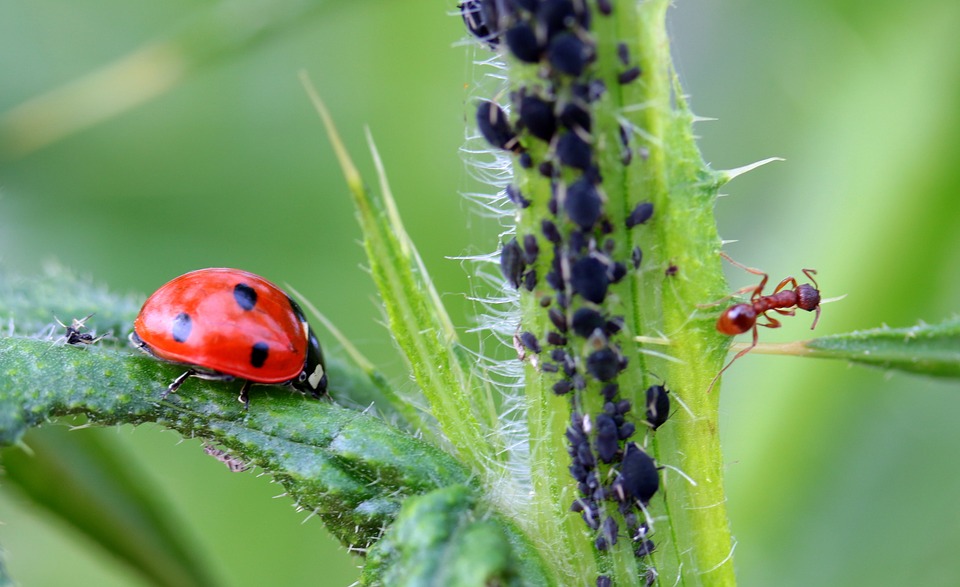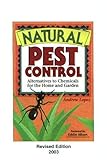Earth Friendly Pest Control for the Home & Garden
 While we have a veritable cornucopia of toxins lining the isles of our stores, the “nuclear solution” is not always warranted or healthy. For nearly every single one of nature’s opportunists that choose to invade our homes and gardens, nature has also provided a solution or defense. Selecting a milder but alternative, effective response can improve the air, water and soil quality of our environment for ourselves, our children and other, bystander species. The following is a list of some tried and tested solutions you may want to use in your home and garden. Your mileage may vary so feel free to innovate and share your experiences if you stumble upon an improvement.
While we have a veritable cornucopia of toxins lining the isles of our stores, the “nuclear solution” is not always warranted or healthy. For nearly every single one of nature’s opportunists that choose to invade our homes and gardens, nature has also provided a solution or defense. Selecting a milder but alternative, effective response can improve the air, water and soil quality of our environment for ourselves, our children and other, bystander species. The following is a list of some tried and tested solutions you may want to use in your home and garden. Your mileage may vary so feel free to innovate and share your experiences if you stumble upon an improvement.
Plant-Based Pest Control
The practice of planting plants that pests find repulsive among those that they will quickly destroy is very well documented. A few of the more common ones include:
- Plant a garlic glove beside the palnt you want to protect. The garlic’s aromtics will infuse the soil and air around the neighboring plant and deter many destructive pests. Peas are an exception, however, as the chemicals in the garlic can retard their growth and quality.
- Basil planted very near and even amongst tomato plants will repel various worms and flies that prey on tomatos. As an added bonus, you’ll be well on your way to a tasty tomato sauce!
- The cabbage moth is a troublesome pest that can wreck crops of cabbage, broccoli and Brussel sprouts. Plant mint, sage, dill, and thyme amongst your vegetables to repel the moth.
- Aphids avoid anise and coriander plants. Intersperse these herbs among plants that aphids typically damage.
Other Pest Control Tips
- Using boiling water to “scald” an ant mound repeatedly, particular a new one, can be an excellent way to deter them from encroaching on laws and gardens without dousing them with dangerous chemicals. Particuarly deep or extensive mounds may require repetition and/or digging.
- Ants are determined foragers and will often invade a home or kitchen simple on the vaguest residue of food. Wipe counter tops, floors, sinks, cabinets and other similar areas with a diluted solution of vinegar and water. Keep some of the mixture on hand in a convenient spray bottle to break “scent paths” if find one.
- Mosquitos, gnats and to a lesser extent, ticks & fleas can be deterred by applying peppermint oil to the skin (test on a small area if you are uncertain about allergies or sensitivities). Some soaps contain REAL peppermint oil and provide a two-for-one solution if you don’t mind the aroma. Many campers and hikers I know swear by the stuff.
- Citronella is a common additive to outdoor candles and lamp oil these days. The pure essential oil can be purchased and used in effusers or your own creations to achieve the same effect. Better yet, grow your own! Although, citronella must be harvested to get full effect.
- Mild, biodegradable dishwashing soap can be diluted with water and repel aphids and other pests when sprayed on plants. Be sure to wash your fruits and vegetables well before consumption.
- Fresh, strong cinnamon (not the anemic twigs you find in grocery stores) in your cupboards and drawers will send silverfish running.
- Cockroaches are notoriously resilient and eventually wary of many commercial toxins. In a disposable container, try mixing half a cup of flour, a quarter cup of powdered/confection sugar and one cup of borax. Sprinkle small amounts in cracks and crevices where cockroaches hide and emerge from. Periodically clean up and replace.
- Honey smeared on yellow stripes of paper and hung can make excellent fly-catching strips without the need for noxious glues.
- Spiders are your friends! Do not kill them. If you really need one out of a particular area, use a cup or glass and sheet of cardboard to capture and relocate it elsewhere.
- Rats and mice both possess the ability to identify and eventually avoid many poisons. A safe and difficult-to-adapt-to solution that is used in many parts of the world is to mix equal parts cement powder and flour. Place this is small dishes, each with a bowl of water beside it. Leave these in areas you’ve noticed the presence or traffic of rats and mice.
Additional Research:
   |
Leave a Reply